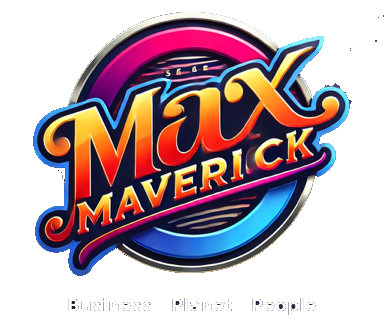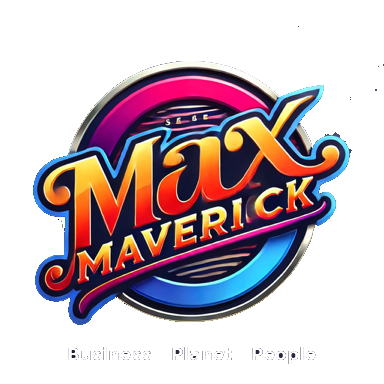Fine-Tuning Alibaba’s Qwen 2.5: A Strategic Analysis
AI models are powerful tools, but what if you could make one a true expert in your field?
That’s where fine-tuning comes in.
By fine-tuning, you can take a general AI model and train it further to specialize in your unique use case, whether it’s:
- Healthcare
- Finance
- Education, or something else entirely.
One such model worth exploring is Alibaba’s Qwen 2.5—a robust and versatile large language model designed for various tasks.
For a deep dive into everything Qwen offers and why it matters, this breakdown of Alibaba’s LLM is a good place to start.
In this strategic analysis, you’ll learn:
- What is fine-tuning?
- How to fine-tune Qwen 2.5 (non-technical way)
- Best practices for fine-tuning Qwen 2.5 (that you can also apply to other LLMs)
This analytical guide will walk you through the entire fine-tuning process, providing actionable recommendations and insights for executive-level decision-making.
What is Fine-Tuning and Why Does It Matter?
Fine-tuning is the process of taking a pre-trained model and training at least one of its internal parameters to make it better suited for your specific needs.
Let’s put it this way: If Qwen is a diamond fresh out of a coal mine, then fine-tuning is the process of cutting and polishing that diamond into something functional, like a diamond ring.
It takes something powerful in its raw form and makes it more practical, purposeful, and aligned to a specific use case.
This strategic enhancement results in a model that’s more accurate, more efficient, and better adapted for real-world applications.
Why Does Fine-Tuning Matter?
A smaller, fine-tuned model can often outperform a larger, generic model. This advantage has been demonstrated by OpenAI with their InstructGPT models and continues to hold true today.
This ability to fine-tune models for specific tasks provides cost-effective solutions that deliver high performance without the need for massive general-purpose models.
Chinese AI startups and tech giants are leveraging fine-tuning to create models that rival the best in the West, showcasing the strategic importance of this process.
By fine-tuning models like Qwen 2.5, organizations can achieve better, sharper responses, faster response times, lower compute costs, and models that understand their domain like a pro.
Types of Fine-Tuning
- Self-Supervised Learning: The model learns from unlabelled data by predicting parts of the text.
- Supervised Learning: You give the model input-output pairs (questions + correct answers).
- Reinforcement Learning: The model learns by getting feedback and adjusts its behavior accordingly.
What is Qwen 2.5 and Why Use It?
Qwen 2.5 is a large language model (LLM) developed by Alibaba. It’s part of the Qwen family, which includes different sizes of models like 0.5B, 7B, and even 72B.
There are two types of Qwen models:
- Base models: These are raw pre-trained models that have learned general language patterns but haven’t been fine-tuned for specific tasks.
- Instruction-tuned models: These models are fine-tuned to follow instructions or respond like a chatbot, trained on specific tasks like answering questions or summarizing text.
When referring to Qwen 2.5 Max, you might mean the larger or more powerful version of the Qwen 2.5 series, whether it’s a base model or an instruction-tuned one, depending on the version used.
By fine-tuning Qwen for specific tasks, such as summarizing emails or classifying customer support tickets, organizations can leverage the model’s capabilities effectively.
Why Should You Use It?
Reviews of Qwen 2.5 highlight its game-changing capabilities, ease of use, and positive impact on various applications, making it a valuable tool for developers, researchers, and startup founders.
By exploring and utilizing Qwen 2.5, organizations can benefit from its flexibility, speed, and intelligence, driving innovation and efficiency in their AI projects.
Getting Started with Alibaba Qwen 2.5 Max
Accessing and setting up Alibaba Qwen 2.5 Max is a straightforward process, whether through open-source repositories, cloud-based platforms, or developer-friendly tools like Hugging Face.
Once the basics are in place, organizations can start experimenting with Alibaba AI Qwen 2.5 Max to build chatbots, analyze data, or fine-tune the model for specific use cases.
Preparing Your Dataset for Fine-Tuning
Before fine-tuning Qwen 2.5 Max, organizations need to ensure their datasets are clean, relevant, and structured to achieve optimal model performance.
What Kind of Data Works Best?
Choosing the right data depends on the desired task, with examples ranging from support chatbot conversations to code explanations, each requiring specific dataset formats and contents.
Easy Tricks on How to Format, Size & Clean
Key tips include formatting datasets in JSON, CSV, or text formats, ensuring dataset size and quality balance, and cleaning data to remove errors or irrelevant information.
By structuring datasets effectively, organizations can create solid foundations for fine-tuning Qwen 2.5 and achieving optimal results.
How to Fine-Tune Alibaba AI Qwen 2.5 Max (Step-by-Step)
Guiding organizations through the step-by-step process of fine-tuning Qwen 2.5, this strategic analysis outlines the installation of required libraries, loading the model, preparing data, choosing fine-tuning approaches, defining training parameters, starting training, evaluating model performance, and saving the model for future testing.
By following these steps, organizations can effectively fine-tune Qwen 2.5 to meet their specific requirements and enhance the model’s performance for targeted tasks.
Best Practices While Fine-Tuning LLM Models
Offering strategic insights and recommendations, this section outlines best practices for fine-tuning large language models like Qwen 2.5 to optimize performance, save time, and achieve impactful results.
- Avoid Overfitting: Implement strategies to prevent overfitting and ensure the model generalizes well to unseen data.
- Monitor Loss and Performance: Track training and validation metrics to evaluate model performance effectively.
- Know When to Stop Training: Determine optimal training epochs based on dataset size and model performance.
These best practices empower organizations to fine-tune LLM models with efficiency, accuracy, and strategic foresight, driving success in AI initiatives.
Conclusion
In conclusion, fine-tuning Alibaba’s Qwen 2.5 offers organizations a strategic advantage in customizing AI models for specific tasks and domains. By leveraging the power of fine-tuning, organizations can enhance their AI capabilities, drive innovation, and achieve superior performance in various applications.
For organizations seeking to capitalize on the latest AI trends and insights, Alibaba’s Qwen 2.5 presents a compelling opportunity to elevate their AI projects and stay ahead of the curve in the rapidly evolving digital landscape.
FAQ
Coming soon…
Recommendations
1. Organizations should consider fine-tuning Qwen 2.5 for specific use cases to unlock its full potential.
2. Regularly monitor model performance and adjust training parameters to optimize results.
3. Explore different fine-tuning techniques, such as LoRA or GaLore, to find the most effective approach for your organization.
References
For more information on fine-tuning AI models and industry insights, refer to:


